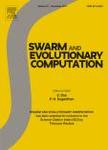版权所有:内蒙古大学图书馆 技术提供:维普资讯• 智图
内蒙古自治区呼和浩特市赛罕区大学西街235号 邮编: 010021

作者机构:Hohai Univ State Key Lab Hydrol Water Resources & Hydraul Eng Nanjing Peoples R China Hohai Univ Coll Water Conservancy & Hydropower Engn Nanjing Peoples R China Hohai Univ Coll Agr Sci & Engn Nanjing Peoples R China
出 版 物:《SWARM AND EVOLUTIONARY COMPUTATION》 (群与进化计算)
年 卷 期:2022年第75卷
核心收录:
学科分类:08[工学] 0812[工学-计算机科学与技术(可授工学、理学学位)]
基 金:National Key R&D Program of China [2021YFC3200403, 2022YFC3200032] Fundamental Research Funds for the Central Universities [B200204044] National Natural Science Foundation of China 111 Project [B17015] HighPerformance Computing Platform, Hohai University Research Funding of China Three Gorges Corporation
主 题:Expensive optimization problem Surrogate -assisted evolutionary algorithm Multi -objective evolutionary algorithm Radial basis functions Structural designs
摘 要:Surrogate-assisted multi-objective evolutionary algorithms have become increasingly popular for solving computationally expensive problems, profiting from surrogate modeling and infill approaches to reduce the time cost of optimization. Most existing algorithms have specified the type of surrogate model before a run and keep the type static during the optimization process. However, a sole surrogate model may not consistently perform well for all problems without any prior knowledge. In this context, this paper proposes an adaptive technique for surrogate models with multiple radial basis functions (RBFs), as the technique can dynamically establish the most promising RBF for each objective, thereby enhancing the reliability of surrogate prediction. Moreover, multi -objective evolutionary algorithms (MOEAs) that are employed as optimizers for infilling criteria can highly affect the search behavior of a surrogate-assisted evolutionary algorithm. The proposed infill technique develops a crowding distance-based prescreening operator to embed various MOEAs. Two techniques collaboratively promote the convergence, coverage, and diversity of the predicted Pareto front. Representative benchmark problems and a structural optimization problem are given to show the effectiveness of the algorithm that em-ploys these techniques. Empirical experiments demonstrate that the proposed algorithm significantly out-performs other state-of-the-art algorithms in most cases.